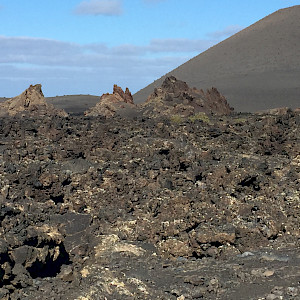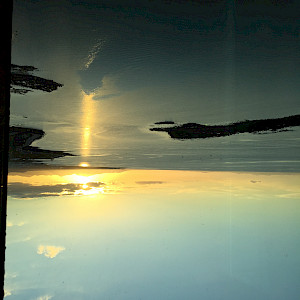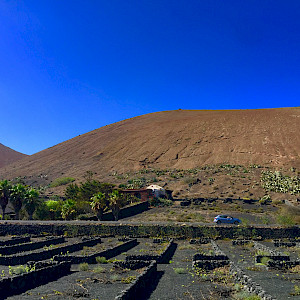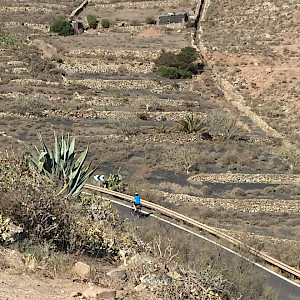Lanzarote, strange island world
I recently returned from a guided bike tour on the island of Lanzarote, Spain. When you are gone almost two weeks, a lot can change. I left this Canarian island of pervading sun and warmth to return to encroaching winter here in the northeast. After a lovely warm and colorful autumn, the trees are now skeletal and an unusually early, deep cold has taken hold. Lanzarote! Sunlight every single day! For those of you, like me, who live half your year in cold greylight, this is a glorious thing.
And the cycling? In my opinion, glorious as well; coastal bike paths, rolling hills, challenging mountains, rewarding seascapes, craggy outcroppings, and...well, for lack of better word, moonscapes.

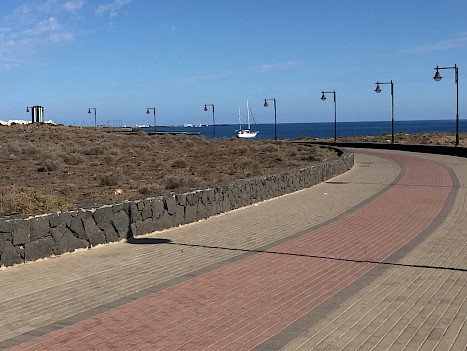



Lanzarote has a landscape that has been described as “lunar” and “otherworldly”. Let me set the stage.
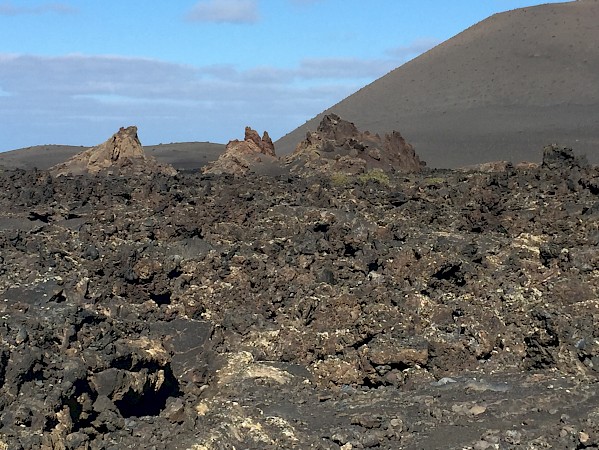
The island is probably the least known of the Canary Islands. It is the most easterly, the largest, yet the most sparsely populated. In the 1700’s, Lanzarote suffered 6 years of volcanic eruptions that changed the island forever, covering the farmlands with black volcanic grit, destroying villages, and roiling the surface into massifs, craters, cones, and strange, rock formations.
Out of the ashes an agriculture developed that adapted to the black volcanic sand. Today the island is known for its onions, potatoes, spinach, and wine. Yes, wine!

The farmers and vine tenders have had to adapt to the unusual conditions on the island which entails protecting the vines and plants from the winds that sweep the land.

Here you can see the vines peeking out of the volcanic soil, surrounded by the protective walls built to shelter and shield. What a contrast these black vineyards and the black soil offer to the startingly white buildings that rise from the terrain.

View from my hotel room in San Bartolomé
Out of the ashes, the National Park of Timanfaya has been established. Las Montañas del Fuego (the Fire Mountains) were actually the epicenter of the volcanic catastrophe that destroyed the lush farmland leaving a bizarre, even colorful, volcanic landscape.
And out of the ashes, the architectural works of César Manrique, Lanzarote born and world renowned architect and artist, are an incredible complement to the volcanic environment. His goal was to make Lanzarote the most beautiful of all the islands, fusing the spectacular landscape with his own style of art.
As he said, "I want to extract harmony from the earth to unify it with my feeling for art." He succeeded in doing so. He actually built his home in the lava tubes, tunnels, and bubbles that formed from the eruptions, lava flow, and subsequent cooling. Many of Manrique's works of art dot the island, from his incredible wind chimes, other volcanic architectural creations, and scupltures. He used the island as his canvas, avoiding exploitation, protecting the environment, and inspiring others to do the same.


Today, the entire island has been declared a Unesco protected biosphere.
The more I bike and tour, the more I realize that I should always expect the unexpected when I travel. I did not realize the climbing that would be required on a couple of days. Keep in mind that I did the guided tour, so each day, our group did the longer distances. I know that a more difficult tour than expected can sometimes ruin a cycling vacation for some, though I would suggest that it should not! There were no time constraints on this tour, so I could take my time, and if necessary, get off my bike and walk a hill. I determined that the incidentals and inconveniences would not set the tone for my travels. If they had, I would have failed to see the color and the beauty that had arisen out of the ashes, not to mention, the food, fun, and friends!

Photo Gallery
(Click to enlarge)
Comments
jehiel
7 years ago
Tripsite Staff
Marie Greer
7 years ago
Verified Reviewer








